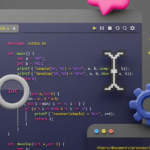Following the awareness stage in the developer marketing funnel is the evaluation stage. At this stage, developers have identified challenges and project requirements and are actively seeking solutions to help streamline their work. As they read product-centered content, they scrutinize it for clarity and real-world usefulness and assess the solution’s overall value.
At the evaluation stage, your objectives should include:
-
Presenting a comprehensive analysis of potential solutions
-
Educating developers on the pros, cons, and specifics of various approaches
-
Positioning your product as a viable solution
Here, developers are likely looking to deepen their knowledge about a product or technology, gain hands-on experience, and identify solutions that support an efficient development workflow. Content written for this stage should ensure the right information is readily available, fostering trust and steering readers toward adopting tools and technologies that best suit their development goals.
Read on to learn how to create evaluation phase content that stands out in the crowded information marketplace and seamlessly converts readers to customers.
Understanding Developers at the Evaluation Stage
The evaluation stage is the second part of the developer marketing funnel. It’s sandwiched between the awareness stage, where developers initially discover your product or service, and the conversion stage — the part of the funnel where developers decide whether to commit to a solution or service. You can check out our quick refresher explaining why each funnel stage requires its own tailored content.
In this second blog post of our three-part series, we’ll zoom in on the evaluation stage. If you haven’t looked at part one, which explores the awareness stage, give it a read! Later, we’ll conclude our series with a discussion of the conversion stage.
Now, back to the evaluation stage.
Developers at the evaluation stage are on a quest to find useful, high-performing products and services. They’ve identified what’s hindering their development processes and what they need to overcome these challenges. Now, they’re looking for solutions. With this idea in mind, developer-oriented content at this stage functions as a roadmap. It helps readers understand the function and value of a product and visualize its use in their development space.
At this stage, transparency, technical accuracy, and clarity are vital. Developers aren’t looking for just high-level introductory content — they’re looking for educational, detailed documentation, tutorials, and case studies that elucidate nuances and empower them to make informed decisions about a solution’s usefulness and impact.
Moreover, your content should go beyond offering a solution. It should aim to demystify the underlying processes that define the efficiency and success of their development process. Creating content that helps developers comprehend different approaches and solutions is instrumental in fostering a trust-based relationship between your developer audience and your brand.
Providing In-Depth Articles and Expert Insights
As outlined above, readers at this funnel stage seek information and insights to decide which solutions and methodologies align with their requirements. Therefore, content written for the evaluation stage should thoroughly explore various solutions, technological advancements, and approaches that meet developer needs.
In-depth articles serve as beacons of knowledge that break down the options available to developers. These articles delve into the intricacies of different solutions, providing a nuanced understanding of their functionalities, benefits, and potential drawbacks. Informative pieces like these are invaluable tools that facilitate a smoother and more confident decision-making process for developers.
Below are some strategies we recommend implementing in your in-depth articles:
-
Lead with features and functionalities — Create articles that explore, explain, and compare the features and functionalities of different tools in the market. These articles give you space to subtly emphasize your product’s strengths while situating it within a larger conversation about available solutions.
-
Review technological foundations — Develop articles that dive into the technical basis of different solutions, including yours. Provide detailed explanations of how products work and what protocols or processes they use, including details of the related benefits. Doing so helps your readers grasp how these technologies — and your product — can address their needs and pain points.
-
Showcase expert opinions — Developing detailed articles can demonstrate your brand’s expertise and keen technical eye. Participate in discourses about the latest trends and technological advancements. Aligning your brand with cutting-edge topics reinforces your commitment to growth and education. Plus, it’s an excellent strategy for subtly situating yourself as an industry thought leader.
Facilitating Informed Choices
As the previous section highlighted, comparison is critical in the evaluation stage. Articles weighing the merits of different solutions act as a compass, helping developers navigate a vast technological landscape saturated with tools. Comparison guides help by distilling complex information into digestible insights.
Additionally, these guides provide a balanced perspective, examining the pros and cons of each option. Presenting a nuanced comparative analysis helps developers comprehend how each solution aligns with their unique needs, allowing them to make informed decisions.
Below are some strategies for creating effective comparison guides.
Perform Objective Analyses
Crafting objective analyses that dissect the strengths and weaknesses of comparable products is pivotal in aiding developers determine the tool that best fits their requirements.
Impartiality is crucial to instill trust in your readers. Discussing your tool alongside competitors in an unbiased way also boosts your solution’s credibility. It removes the salesy tone that highlighting a single product typically creates, keeping your argument factual and evidence-based. These qualities are essential to developers, who don’t take well to flowery sales pitches or marketing fluff.
Highlight Real-World Use Cases
Create articles with a practical view of your tools in action. Illustrate real-world scenarios where developers could use each tool to provide insights into how each solution might look.
When developing use cases, outline both the practical benefits and potential limitations of each tool you’re discussing. Whether you’re connecting each tool to an individual use case or comparing how they measure up collectively against one scenario, keep your comparisons balanced and unbiased.
Include Testimonials and Reviews
Leverage testimonials and reviews to ground your product comparisons. You can include reviews from respected industry specialists, consult forums to gain community consensus, and cite credible sources who have performed analyses that can back up your claims.
Including these voices and sources in comparison articles builds trust and demonstrates reliability. It also helps keep bias at bay by centering voices other than your brand’s.
Leveraging Technical Whitepapers
Technical whitepapers are another content type beneficial for the evaluation stage. Offering highly detailed, exhaustive insights into a product’s capabilities, whitepapers provide a comprehensive understanding of a product’s potential utility, place within the market, and overall impact. Chock-full of data and real-world use cases, whitepapers showcase your product’s potential to solve real-world problems.
When crafting effective whitepapers, ensure you do the following:
-
Present data-driven insights — Ground the paper in evidence substantiating your claims about the product. When including market-based research, cite reputable sources, like government bodies and tech research agencies, to demonstrate that your claims are well-founded. Doing so builds a solid foundation of trust and credibility with your developer readership.
-
Include case studies — Use case studies to depict the product’s efficiency in real-world scenarios. These studies should be data-driven, real-world stories demonstrating your solution’s value. Gather information from your customers’ experiences and, when you can, include quotations from the team about the impact their partnership with you had on their business. When you include case studies, you assure developers of the product’s practical applicability.
-
Provide a comprehensive resource kit — Supply a complete kit with your whitepaper to extend the reader’s understanding of the product’s capabilities. Creating a rich information repository that balances the whitepaper’s more high-level discussion with hands-on guides and detailed documentation nurtures and streamlines your reader’s transition to the conversion stage.
Next Steps
When guiding developers through the evaluation stage, it’s paramount to create detailed, educational, and balanced content that positions your brand as a knowledgeable, objective source of information. Real-world use cases, testimonials and data, and detailed feature comparisons help developers make informed decisions about which product to choose.
The evaluation stage is pivotal in establishing trust between you and your readers. It’s where you prepare developers for the next stage — conversion — by offering a well-rounded, well-researched, and fair perspective of your brand and product offerings.
Ensure your marketing funnel content yields results. Reach out to ContentLab for content that effectively guides developers through the evaluation phase and beyond. Be sure to jump over to this series’ third and final article, where we’ll dive into the conversion stage and how to create content that transforms readers into customers.





